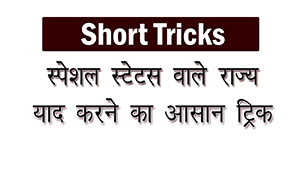Area Questions Answers Formulas, Tips and Tricks
1. Area formulas and concepts
I. Results on Triangles:
1. Sum of the angles of a triangle is 180°.
2. The sum of any two sides of a triangle is greater than the third side.
3. Pythagoras Theorem:
In a right-angled triangle
(Hypotenuse)2=(Base)2+(Perpendicular)2
Please Note, this is very important theorem which not only helps solving the questions in area but also in other chapters like heights and distances etc.
4. The line joining the mid-point of a side of a triangle to the positive vertex is called the median.
5. The point where the three medians of a triangle meet, is called centroid. The centroid divided each of the medians in the ratio 2 : 1.
6. In an isosceles triangle, the altitude from the vertex bisects the base.
7. The median of a triangle divides it into two triangles of the same area.
8. The area of the triangle formed by joining the mid-points of the sides of a given triangle is one-fourth of the area of the given triangle.
II. Results on Quadrilaterals:
1. The diagonals of a parallelogram bisect each other.
2. Each diagonal of a parallelogram divides it into triangles of the same area.
3. The diagonals of a rectangle are equal and bisect each other.
4. The diagonals of a square are equal and bisect each other at right angles.
5. The diagonals of a rhombus are unequal and bisect each other at right angles.
6. A parallelogram and a rectangle on the same base and between the same parallels are equal in area.
7. Of all the parallelogram of given sides, the parallelogram which is a rectangle has the greatest area.2. Area formulas of Rectangle
1. Area of a rectangle = (Length * Breadth)
Length=AreaBreadthBreadth=AreaLength
2. Perimeter of a rectangle = 2(Length + Breadth)
3. Square area and perimeter formulas
1. Area of Square = (side)2=12(diagonal)2
2. Let a be the length of side of square then perimeter of square is 4a
4. Area of four walls of a room
Area of 4 walls of a room = 2 (Length + Breadth) x Height
5. Triangle area formulas
1.
Area of a triangle =12∗Base∗HeightArea of a triangle =√s(s−a)(s−b)(s−c),
where a, b, c are the sides of a triangle and
s=12(a+b+c)
2. Area of equilateral Triangle = √34∗(side)2
3. Radius of incircle of an equilateral triangle of side a = a2√3
4. Radius of circumcircle of an equilateral triangle of side a = a√3
5. Radius of incircle of a triangle of area a and semi-perimeter s = as6. Area of Parallelogram, Rhombus and Trapezium
1. Area of parallelogram = (Base x Height).
2. Area of a rhombus = 12*(Product of diagonals).
3. Area of a trapezium = 12 x (sum of parallel sides) x distance between them.7. Area formulas of circle
1. Area of a circle = πR2, where R is radius
2. Circumference of a circle=2πR
3. Length of a arc=2πRθ360 where θ is the central angle
4.
Area of sector = 12(arc∗θ)=πR2θ360
5.
Area of a semi circle =πR22
6.
Circumference of a semi circle =πR














